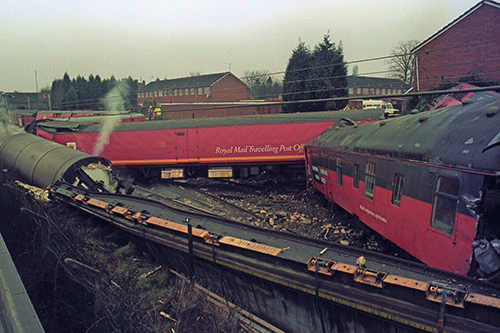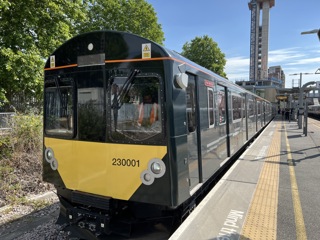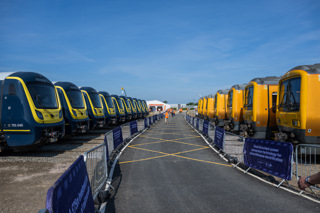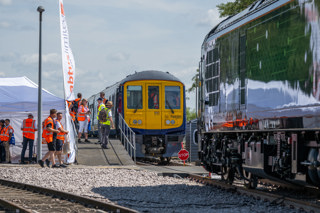No passenger wants an unsafe railway, but do they want one that closes to avoid any risk? Transport Focus Director Natasha Grice looks at responses from a 2015 survey and how opinion has evolved since
Nine years ago, Transport Focus worked with the rail industry’s then National Task Force to explore passengers’ views about extreme weather.
No passenger wants an unsafe railway, but do they want one that closes to avoid any risk? Transport Focus Director Natasha Grice looks at responses from a 2015 survey and how opinion has evolved since
Nine years ago, Transport Focus worked with the rail industry’s then National Task Force to explore passengers’ views about extreme weather.
Opinions may have evolved a bit since then - for many, COVID and new technologies have reduced the need to physically be at an office or meeting, and strikes have sadly forced people to cope with the railway being shut.
But what passengers told us during the extreme heat in 2022 suggests that views haven’t fundamentally changed. People who could not get where they needed to go were clearly frustrated that, in their eyes, the railway let them down.
So, what did the 2015 research find?
Passengers had high (and possibly unrealistic) expectations that the railway should provide a normal service whatever the weather. They had a strong sense that with the right level of investment and planning, it should be possible to provide a decent, safe train service.
Whether accurate or not, passengers feel that if railways can be made to work in places with far more extreme weather than us (hot and cold), then we should be able to do it here, too.
When it comes to safety, that international context makes it hard for passengers to accept that the weather we experience in Britain makes it unsafe to run trains. And the fact that the railway is so safe in comparison with road transport also plays a part.
Passengers do not want the railway to do unsafe things, and they trust it not to.
At the same time, they are aware that with sensible mitigations such as speed restrictions, the railway is still going to be far safer than getting in the car - whatever the weather is doing.
We asked passengers about their priorities during times when the weather prevents the railway running perfectly, and they wanted as near normal a service as possible.
As with any form of disruption, they also wanted better passenger information - an area where the industry, while making progress, still has a long way to go.
Back then, passengers had a strong adverse reaction to late starts the day after a storm (at that time, ‘route proving’ following storms had led to 1100 starts on parts of the network).
It is interesting that even in 2015, long before Carmont where the weather tragically exposed a construction defect, passengers in Scotland told us that they felt the railway was being too cautious and suspending services too quickly.
However, there is evidence from Scotland that recent photos of water up to platform edges and damage to trains that have hit fallen trees is successfully highlighting the challenges faced.
To better understand how decisions are made when bad weather hits, we recently joined Scotland’s Railway for a visit to its Integrated Control Room.
Weather operations delivery managers take an evidence-based approach and provide professional meteorological advice - to manage weather-related incidents and profile the risk associated with weather events.
They focus particularly on vulnerable earthworks, with constant detailed monitoring of weather patterns and forecasts to assist decision making.
Our learnings from the day will help inform our future work in this area.
Impact of suspending services
What should today’s railway take from all this?
First, it must never forget that its job is to move people and goods. Opting out of doing that, even if a justifiable decision on a particular day, is ultimately failure to do that job.
A fair-weather railway cannot be the backbone of Britain’s transport system in the way it aspires to be. “Trust us, rely on us - but you’d better have a car/lorry for the days we’re shut” is not a good sell.
Second, while it’s clearly true that many people can now organise their lives around the railway being shut, in ways that they couldn’t in the past, the industry must not forget that not everyone has that luxury. If you need to be somewhere to get paid, suspending services entirely has serious impact.
Although not caused by the weather, we can see from our research during industrial action that having no service at all impacts disproportionately on those who cannot work from home, likely to include those in lower-paying jobs.
Third, the railway must be careful not to undermine the case for investment to make it safe to operate, even if at reduced speed, during severe weather.
Is there a danger that by amending the timetable in advance, fewer trains show as delayed or cancelled (or none at all if the service is suspended), giving the false impression from performance data that there isn’t a problem to address?
Returning to safety, no passenger wants an unsafe railway. But do they want a railway that closes to avoid any risk and forces them to travel by road, where the latest data shows that Britain-wide, 1,633 people lost their lives in the 12 months to June 2023?
Possibly not.
Login to continue reading
Or register with RAIL to keep up-to-date with the latest news, insight and opinion.



















Login to comment
Comments
No comments have been made yet.